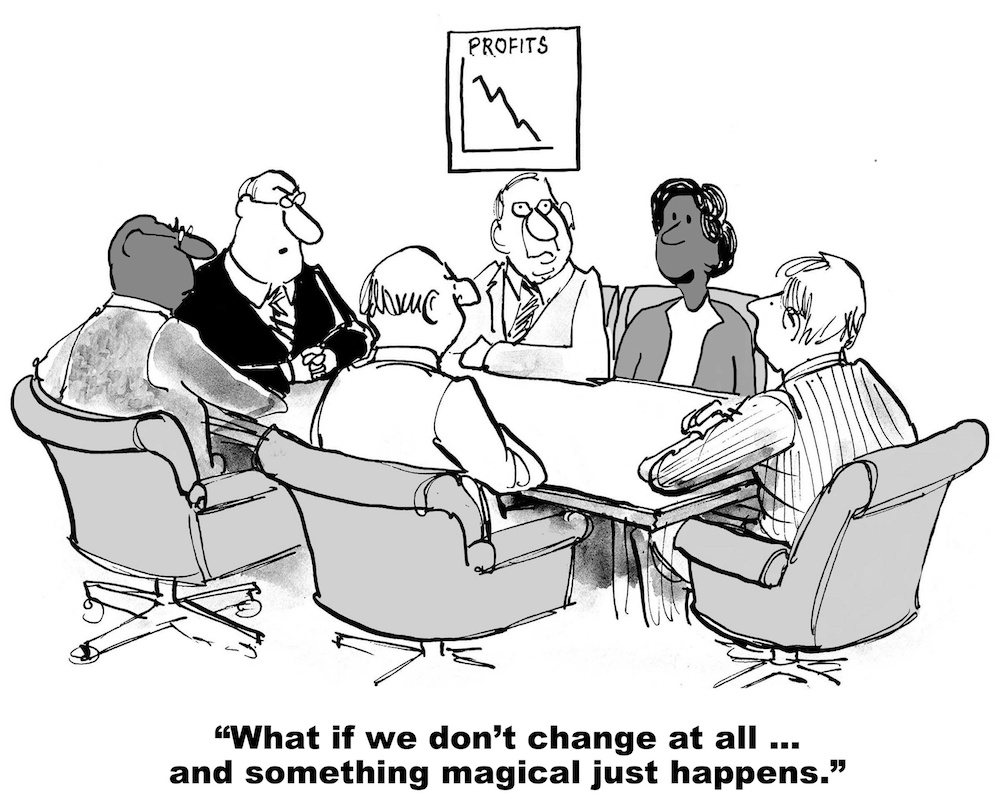EUA’s Heather Turner Loth explores how employers have an opportunity to further elevate employees’ well-being through change management.

Change can be hard, but it can also be healing. As a society, we’ve found ourselves unable to avoid change and are facing new realities to the way we live, work, and play as a result of a global pandemic. Virtually everyone has been touched in some way, shape or form. Although many of the changes we’ve experienced have been thrust upon us rather than chosen, we do have the power to manage some of the change that’s affecting us. Dedicating his life to the study of change, Charles Darwin remarked, “It is not the strongest of the species that survive, not the most intelligent, but the one most responsive to change.” Those who are responsive to change not only survive, but often thrive. This applies as much to individuals as it does to groups and organizations.

Why Change Management Matters for Employee Well-Being
Now, more than ever, is the time for leadership to strategize and embrace change management for the health of their companies, their employees and themselves. Change can be exhausting; but, if navigated well, it can be one of the strongest catalysts to enhancing well-being. In a recent article by Karla L. Miller in the Washington Post—that hit such a relatable nerve with readers that it warranted a follow up article—Miller details how and why the workforce is currently undergoing a mass exodus from various industries across the board. Deemed, “The Great Resignation,” originally by Texas A&M University Associate Professor of Management, Anthony Koltz, the huge increase in job departures over the past year can largely be attributed to four main causes: a backlog of workers who wanted to resign before the pandemic but were holding on; burnout, particularly among, frontline healthcare, food service and retail workers; “pandemic epiphanies” in which people experienced major shifts in identity, desires and purpose, leading them to pursue new career paths or start their own businesses; and finally, an aversion to returning to offices after a year or more of working remote.
It seems that in one form or another, the unprecedented shifts the workforce is experiencing all boils down to high levels of stress and a desperate thirst for improved well-being across the board. People are wanting to eliminate the simmering, if not boiling, tension we have found ourselves in as a society. Up from 75% surveyed in 2019, over 90% of session attendees reported that they experienced a moderate to high stress level as it relates to the workplace. This concerning trend further demonstrates that attention to employee well-being is no longer a “nice to have” company feature, but essential.

Never Underestimate the Power of Transparency
Communication can provide people with a real sense of psychological safety—even if what’s being communicated isn’t ideal. For example, throughout the shutdown, our leadership team felt it was important to be transparent and communicate regularly as a firm to keep our employees informed of changes—even if the update was uncertainty, or in other words, “we don’t know.” People don’t necessarily expect leaders to have all the answers, but they do expect to be informed and included on decisions that impact them. Sometimes, just reassuring people that leadership is aware of an issue and working on it is enough to put people at ease and build trust and confidence. It is when things are opaque that the rumor mill runs, assumptions are made, people draw their own conclusions and trust erodes.
One of the most effective change management techniques for building trust and enacting change is by hearing from and listening to the employees themselves. Surveys help connect leadership with employees at all levels across an organization to make informed decisions. That said, it is important that employers word surveys carefully. There is a risk in asking employees what they want that they’ll assume their employer will, in fact, give them what they want, or some form of it. Just because employers have been made aware of an employee preference, it doesn’t necessarily mean it’s something they can promise or deliver. Rather than asking employees what they want in an open-ended fashion, ask where the gaps are in their work environment as it relates to their workflow or individual access to specific features or tools that could support well-being. Then, take action to make the environment more conducive to employee well-being. As a result, staff will experience a sense of satisfaction and security having been heard and responded to.

Practice What You Preach
For change to be accepted, it must be modeled. Even if a leadership team designs a wonderful plan that they are sure will enhance well-being amongst their staff, if they do not practice what they preach, their efforts will have been for naught. The last two years have seen amplified efforts around employee well-being. New activities, programs and spaces that support employee well-being have been widely implemented and influenced many company cultures.
An effective change management technique is modeling behavior. When leadership models support of spaces, they have a higher likelihood of adoption and successfully impacting the organization. A simple example of leadership behavior modeling is encouraging increased movement by initiating outdoor walking meetings. Subtle leadership behaviors such as this can help reinforce that having a meeting in this fashion is not only acceptable, but encouraged. The same demonstrated encouragement applies to areas of respite, such as quiet rooms, prayer rooms, or lounge-type areas in a work environment. These spaces typically go underutilized if not supported by leadership modeled behavior.
A leader, rather than going to an employee’s desk for a quick touch-base, could invite that employee to a lounge area for a casual conversation. An executive client of mine recently shared that his meetings with employees had typically taken place in a conference room or his office and generally had a more formal tone; now, with a new lounge and café area in their workplace, he hosts meetings in the cozy couches within that space. As a result of the relaxed setting, he reports having far more candid conversations for authentic feedback.

Employees need to see people from all levels of the company utilizing amenities or there will be a lingering, even if unspoken, perception that they are not doing your job, or even wasting time, if socializing or working in more causal environments. If, however, it is a norm for employees to see leadership taking breaks, casually conversing, and utilizing amenities, they will feel the freedom to do the same.
Try It Before You Buy It
The time is ripe for change, particularly around how organizations support employee well-being. If change is managed and communicated properly, it positions people and organizations to adapt and move towards progress. Generally, good advice to those contemplating a well thought out change is to simply go for it. Pilot programs are a great way to do a trial run of something before implementing across departments, an office, multiple offices, or a company’s full real estate portfolio. For example, if a company is looking for ways to enhance flexibility to support employee well-being, have a select group of individuals or a specific department test out a free address system for a period of time, obtain input, and then work to adjust or confirm this style of work environment as a solution. With any change, it is important for all involved to have a clear understanding of the measures of success – what does success look like for this change to embraced and implemented beyond the pilot group? If the change does not meet the group’s definition of success, they can always try something different. Pilots offer minimal risk but potentially maximum reward by gaining valuable, real-time feedback before applying theories to an entire organization.

The bottom line is that employers have an opportunity to further elevate care and support for our employees’ well-being. Small gestures can go a long way in showing we care; the crucial ingredient to support new programs, spaces or policies is thoughtful change management.
Consider change management the rudder of a boat; it can steer your ship towards the desired course. As Captain your goal is to maintain course, keep everyone on board, and arrive at your destination. Sometimes, you need to chart a whole new course to get to your desired location and a more complex change management strategy may be in order. Other times, you may only need a slight tug at the wheel through simple strategies or tweaks to behaviors to course correct. No matter your destination, change management strategies can help you successfully get to where you want to go.

